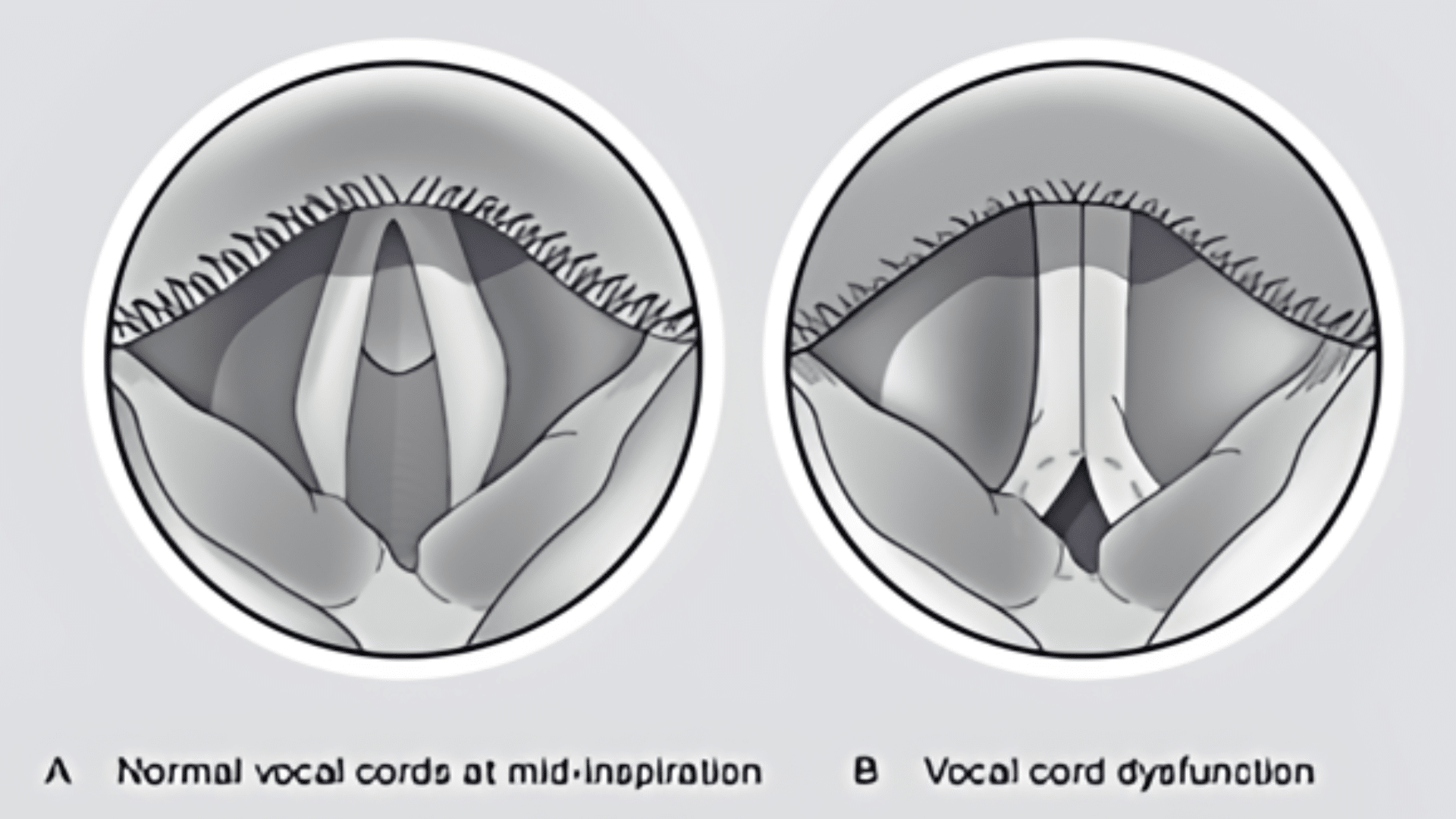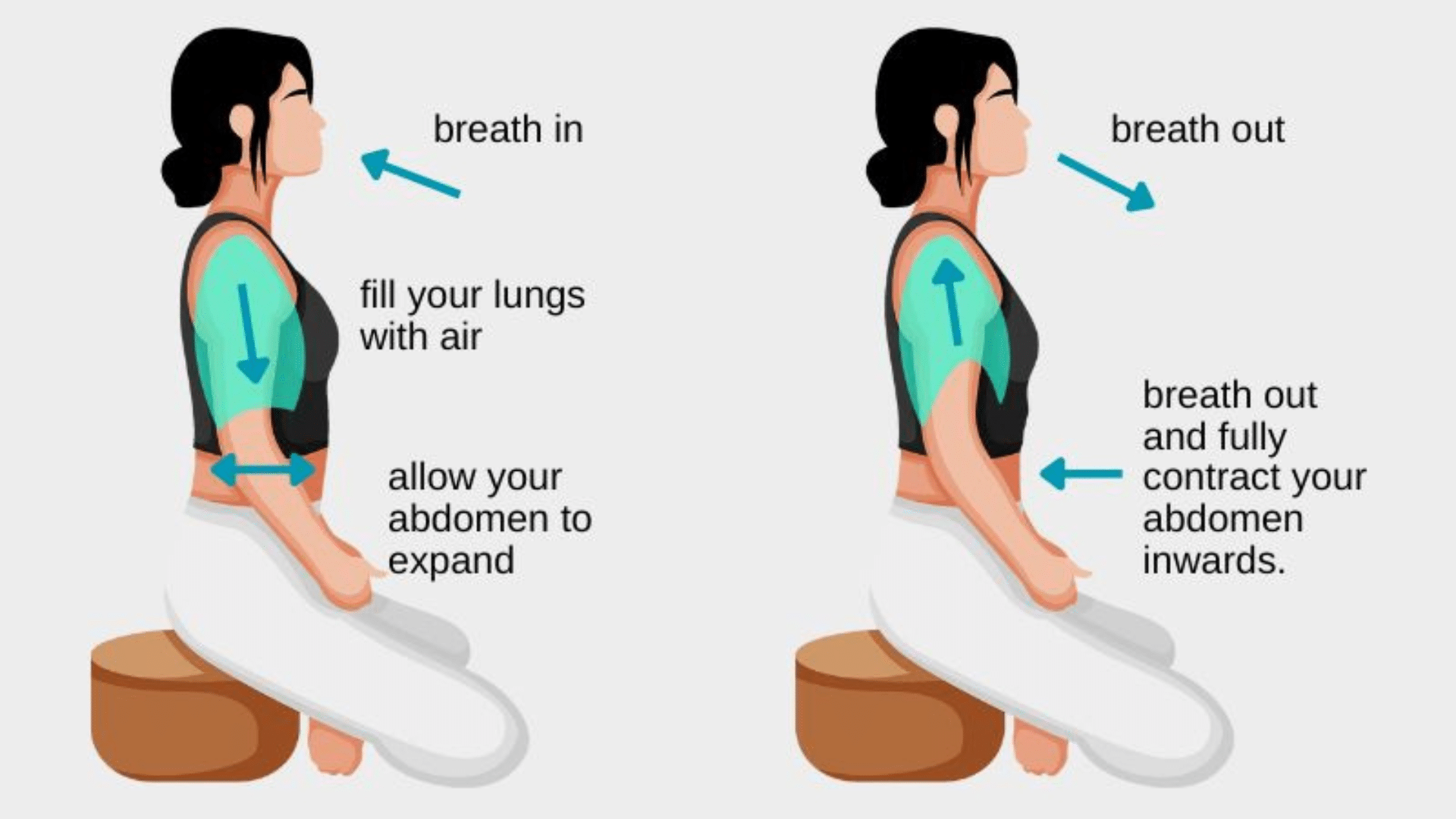Imagine breathing freely again without fear of sudden airway tightness. Sounds good, right?
If you’re dealing with Vocal Cord Dysfunction (VCD), you know how scary it can be when your throat seems to close up.
VCD occurs when your vocal cords don’t open correctly as you breathe. It can make you feel short of breath or even like you’re choking. Not fun at all.
But don’t worry! With the right breathing exercises, you can learn to manage VCD effectively.
These techniques are simple, quick, and can be done anywhere.
Ready to take charge of your breathing? Let’s explore some powerful exercises to help you manage VCD.
Whether you’re new to this or looking for fresh strategies, we’ve got you covered.
Let’s get started!
What is Vocal Cord Dysfunction?

Vocal Cord Dysfunction (VCD) is a breathing problem that can catch many people off guard.
VCD happens when your vocal cords close up when they shouldn’t.
Usually, these cords should open wide when you breathe in. But with VCD, they do the opposite, making it hard to get air into your lungs.
Symptoms of VCD
If you have VCD, you might notice:
- Trouble getting your breath
- A feeling of tightness in your throat
- Coughing that won’t stop
- A whistling sound when you breathe in
Causes and Triggers
VCD can start for different reasons:
- Working out
- Feeling worried or upset
- Strong smells or fumes
- Things in the air that bother your throat
It’s important to know that VCD is not the same as asthma.
While they might seem alike, asthma medicines don’t help VCD. This is one-way doctors can tell them apart.
Breathing Exercises for Immediate Relief
When VCD hits, you need quick help. These breathing exercises can give you that fast relief.
Think of them as your go-to tools when breathing gets tough.
Let’s look at three key exercises to help you manage VCD symptoms immediately.
1. Paused Breathing Technique

This exercise helps open up your airway when it feels tight. Here’s how to do it:
- Find a comfy seat. Keep your back straight, but let your shoulders relax.
- Take a gentle breath through your nose.
- Now, stick out your tongue past your lower lip.
- Breathe slowly through your mouth, like you’re softly saying “Ha, Ha, Ha”.
- Do this ten times in a row.
- Try to practice this three times every day. This way, you’ll be ready when VCD shows up.
2. Belly Breathing Technique

This method helps you breathe from your belly, which can calm your throat muscles. Here’s the step-by-step:
- Sit down and put your hand on your belly.
- Breathe in through your nose. Feel your belly push your hand out.
- As you start to breathe out, put your tongue tip where your top teeth meet the roof of your mouth.
- Make a hissing sound as you slowly breathe out. Your hand should move back in as your belly goes down.
- Do this ten times, three times a day.
3. Diaphragmatic Breathing

This type of breathing uses your diaphragm, a big muscle under your lungs. It can help you breathe easier during a VCD episode. Here’s a quick guide:
- Focus on taking deep breaths using your belly, not your chest.
- Try to relax your whole upper body as you breathe.
- Use this when you feel VCD symptoms coming on.
Remember, practice makes perfect with these exercises. The more you do them, the better they’ll work when you need them most.
Building Regular Breathing Practices
Making breathing exercises part of your daily routine is key to managing VCD in the long run.
Think of it like training for a sport—the more you practice, the better you’ll perform when it counts.
Let’s explore how to build these practices into your everyday life.
Consistency is crucial when it comes to breathing exercises. Here’s why:
- Try to do your exercises 2-3 times every day. This helps your muscles remember what to do.
- Mix it up! Practice while lying down, sitting, and standing. This makes the exercises work better in different situations.
1. Mental Checklist During Exercises
As you do your breathing exercises, run through this quick checklist:
- Is your face relaxed? How about your jaw and shoulders?
- Check that your belly is moving, not your chest.
- Are you breathing slowly and steadily?
2. Swallow-Breath Technique
This technique can help stop a VCD episode in its tracks:
- Take a breath in.
- Swallow.
- Start breathing from your belly.
- Do this for ten full breaths.
- If it’s not working after several tries, it might be time to ask for help.
3. Relaxed Throat Breathing
This exercise helps keep your throat open and relaxed:
- Breathe in while keeping your throat loose.
- Let your tongue rest on the bottom of your mouth.
- Keep your lips gently closed.
- Do this five times at different points in your day.
- It’s especially helpful before times you know might be stressful.
Remember, these exercises are tools in your VCD toolkit.
The more you use them, the more natural they’ll become.
With time, you’ll find yourself breathing easier without thinking about it.
Conclusion
Living with Vocal Cord Dysfunction doesn’t have to hold you back.
By making breathing exercises a part of your daily routine, you’re taking control of your health.
Remember, practice is key – the more you use these techniques, the more natural they’ll become.
But don’t go it alone. Your healthcare team is there to support you.
They can help fine-tune these exercises to fit your needs and create a plan that works best for you.
So, what’s next? Start small. Pick one exercise from this guide and try it today.
Then, gradually add more to your routine. And don’t forget to track your progress.
Ready to breathe easier? Your journey to better breathing starts now.
Take that first deep, relaxed breath, and keep going!











